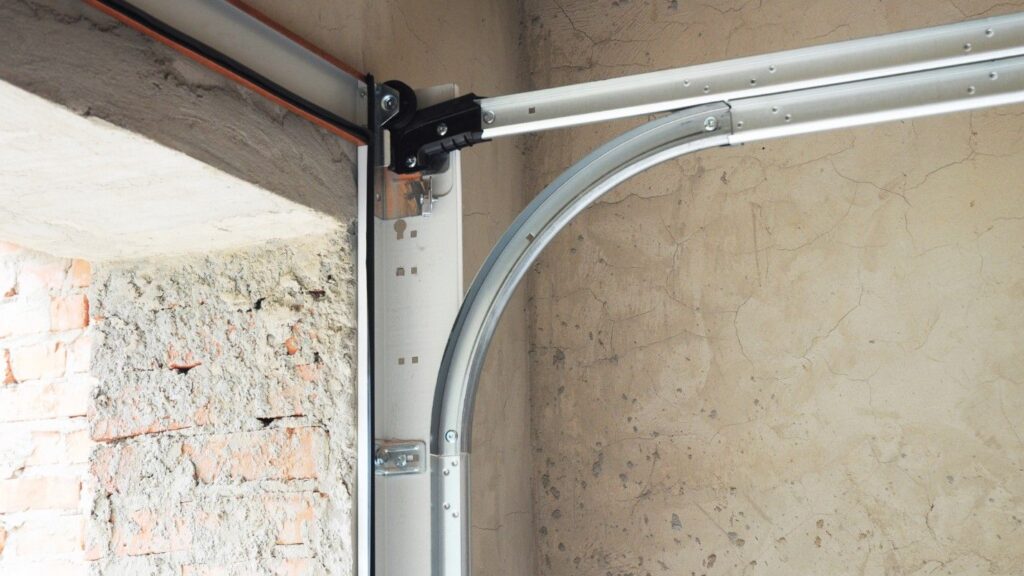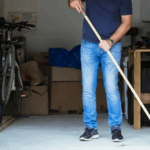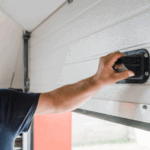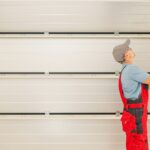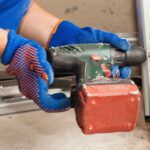Your garage door is one of the hardest-working components of your home, opening and closing hundreds (if not thousands!) of times per year. Keeping it in good condition is essential for continued smooth operation, safety, and longevity. One of the easiest and most effective ways to maintain your garage door is through proper lubrication.
In this guide, we’ll walk you through the steps of properly lubricating your garage door, some of the essential garage door maintenance Santa Rosa tasks every homeowner should know, and when it’s time to call in a professional like Mark’s Garage Doors.
Why Lubrication Matters for Your Garage Door
Garage doors have multiple moving parts that experience friction and wear over time. Without proper lubrication, these parts can become noisy, operate inefficiently, and even break down requiring professional garage door repair. Lubrication helps to:
- Reduce friction and wear on components
- Prevent rust and corrosion
- Extend the life of your garage door system
- Improve overall operation and efficiency
Regular lubrication is a simple task that can make a significant difference in how well your garage door functions.
How to Properly Lubricate Your Garage Door
Lubricating your garage door isn’t complicated, but it’s essential to do it correctly to avoid damage or unnecessary buildup. Follow these steps to ensure your garage door operates smoothly.
Step 1: Gather Your Materials
Before starting, you’ll need:
- A high-quality garage door lubricant (preferably a silicone-based or lithium-based lubricant)
- A clean cloth
- A step ladder
- Safety gloves and glasses (optional but recommended)
Avoid using WD-40 as a lubricant, it’s a degreaser, not a long-term lubricant, and can attract dirt and grime.
Step 2: Clean the Garage Door Components
Before applying lubricant, clean the moving parts of your garage door. Use a dry cloth to remove dust, dirt, and old lubricant buildup. This ensures that the new lubricant adheres properly and doesn’t trap debris.
Step 3: Lubricate the Moving Parts
While it’s not generally advisable to install your garage door yourself, minor maintenance like lubrication can be done easily:
- Hinges – Apply a small amount of lubricant to the pivot points of each hinge (except plastic ones, which don’t need lubrication).
- Rollers – If your rollers have metal bearings, apply lubricant to the bearings. Avoid lubricating plastic rollers, as it can cause deterioration.
- Springs – Spray a light coat of lubricant on your garage door’s torsion springs to reduce friction and prevent rust.
- Tracks – Do not lubricate the tracks directly; instead, wipe them clean with a cloth to remove debris. Lubricate the bearings inside the rollers for smooth movement.
- Lock and Keyhole – If your garage door has a manual lock, apply a small amount of lubricant to the keyhole to keep it from sticking.
- Garage Door Opener Chain or Screw Drive – Apply lubricant to the chain or screw drive if you have a chain-driven or screw-driven garage door opener. Avoid over-lubricating to prevent excess buildup.
Step 4: Open and Close the Door
After lubrication, manually open and close your garage door a few times to distribute the lubricant evenly. Then, operate it using the opener to ensure smooth movement.
Step 5: Wipe Away Excess Lubricant
Using a clean cloth, wipe away any excess lubricant to prevent drips or messes. Too much lubricant can attract dust and debris, leading to buildup over time.
Other Essential Garage Door Maintenance Tips
Lubrication is just one part of garage door maintenance. To help prevent common garage door issues, here are other important tasks homeowners should perform regularly:
Test the Garage Door Balance
A properly balanced garage door is essential for smooth operation. To check the balance:
- Disconnect the opener by pulling the release handle.
- Manually lift the door halfway and release it.
- If it stays in place, it’s balanced. If it moves up or down, the springs may need adjustment.
If your garage door is unbalanced, do not attempt to adjust the springs yourself, call a professional like Mark’s Garage Doors.
Check the Auto-Reverse Safety Feature
Garage doors have an auto-reverse feature that prevents them from closing on people or objects. To test this:
- Place an object (like a roll of paper towels) under the door.
- Close the door using the opener.
- If it doesn’t reverse upon contact, the safety feature needs adjustment.
Inspect and Replace Weather Stripping
The rubber weather stripping at the bottom of your garage door keeps out dirt, pests, and moisture. If it’s cracked or brittle, replace it to maintain insulation and protection.
Keep the Tracks Clear
Regularly check the tracks for dirt, debris, or obstructions that could prevent smooth movement. If you notice misalignment, call a professional for adjustments.
Test and Replace the Batteries in Your Garage Door Opener
Weak batteries can cause inconsistent operation. Check and replace the batteries in your remote and wall-mounted keypad at least once a year.
When to Call a Professional for Garage Door Maintenance or Repair
While basic maintenance can be done by homeowners, some garage door issues require professional expertise. Here are signs you should call in professional garage door maintenance:
Broken or Worn-Out Springs
Garage door springs have high tension and can be dangerous to replace. If you hear a loud bang or notice gaps in the springs, call a professional immediately.
Unbalanced or Misaligned Door
If your garage door appears crooked or struggles to open and close evenly, there may be an issue with the cables, tracks, or springs. A professional can safely realign and balance the door.
Loud or Unusual Noises
Grinding, squeaking, or banging sounds can indicate worn-out rollers, loose hardware, or track misalignment. A technician can diagnose and fix the issue before it worsens.
Garage Door Opener Malfunctions
If your garage door opener is unresponsive, makes unusual noises, or only works intermittently, there may be an electrical issue or mechanical failure. Professional repair can restore its function.
Slow or Sticking Garage Door
A garage door that moves slower than usual or gets stuck may have an issue with the rollers, tracks, or opener motor. A professional can assess and resolve the problem.
Visible Damage to Panels or Tracks
Dents, cracks, or bent tracks can affect the operation and safety of your garage door. Professional repair ensures the door remains secure and functional.
Keep Your Garage Door in Top Shape with Mark’s Garage Doors
Regular maintenance and proper lubrication are essential for a smooth, quiet, and long-lasting garage door. By following these simple steps, you can prevent breakdowns, improve performance, and extend the lifespan of your garage door system.
At Mark’s Garage Doors, we offer expert maintenance and repair services to keep your garage door running safely and efficiently. Contact us today or give us a call at (415) 497-0459 to schedule a professional inspection and ensure your garage door remains in top condition!
Owner / Founder
Mark Wilson is the owner and founder of Mark’s Garage Doors, a locally owned and operated company serving Sonoma County and the North Bay. Since founding the business, Mark has built a reputation for expert craftsmanship, responsive service, and honest communication. He specializes in residential and commercial garage door installation, service, and repairs, offering custom solutions designed for durability, performance, and curb appeal.
With decades of hands-on experience, Mark continues to lead his team with a focus on reliability, safety, and customer satisfaction—values that have made Mark’s Garage Doors a trusted name in the region.

